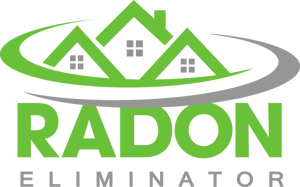Radon gas is a silent intruder, seeping into homes and commercial spaces alike, posing a significant threat to the health of occupants. Understanding its nature, risks, and how to safeguard against it is paramount for every homeowner and building professional.
It's a colorless, odorless, and tasteless radioactive gas that lurks beneath the surface, often going unnoticed.
In this comprehensive guide, we'll unravel the enigma surrounding radon, exploring its origins, the dangers and health hazards that it presents, and the crucial steps to mitigate its harmful effects.
By the end, you'll possess the knowledge and tools to protect yourself, your loved ones, and your property from this silent but deadly intruder.
For more information on how to prepare your home or business for a radon test, click here!
Table of Contents
- What Is Radon Gas?
- How Does Radon Gas Form?
- How Does Radon Enter My Home?
- How Do You Know If There's Radon In Your Home?
- Why Is Radon a Problem?
- Is There a Safe Level of Radon?
- What Should I Do If I Have Radon In My Home?
What Is Radon Gas?
Beneath the earth's surface lies a hidden menace—radon gas, a radioactive byproduct of uranium decay. Like a whisper carried on the wind, radon infiltrates our homes and workplaces through tiny cracks and crevices, evading detection with its stealthy nature.
Once inside, it accumulates, its invisible presence posing a significant health risk as it emits radiation that can damage lung tissue.
The danger of radon lies in its link to lung cancer, with prolonged exposure increasing the risk significantly, rivaling that of smoking. This silent threat casts a shadow over our health and well-being, reminding us of the hidden dangers within our own spaces.
Understanding the origins and risks of radon is crucial, empowering us to take action to fortify our defenses and protect ourselves from its harmful effects. By arming ourselves with knowledge and implementing mitigation measures, we can reclaim our indoor environments as havens of safety and well-being, free from the looming threat of radon gas.
How Does Radon Gas Form?
Radon gas originates from the natural decay process of uranium present in soil, rock, and water sources. When uranium undergoes radioactive decay, it generates radon gas as a byproduct.
From there, this gas embarks on a journey, migrating through the soil and making its way into buildings. Once inside, radon can accumulate to hazardous levels, particularly in areas with inadequate ventilation, such as basements and crawl spaces.
This propensity for accumulation underscores the importance of proactive measures to mitigate radon infiltration and ensure indoor air quality remains at safe levels.
How Does Radon Enter My Home?
When it comes to radon sneaking into homes and commercial buildings, it's like it has a whole playbook of entryways to choose from. These pathways include:
-
Cracks in Walls and Floors: Even the tiniest cracks can become highways for radon to enter indoor spaces, making thorough inspection and sealing essential.
-
Gaps in Foundations: Foundational gaps provide prime opportunities for radon infiltration, requiring diligent attention to ensure proper sealing and reinforcement.
-
Gaps Around Pipes and Cables: Radon doesn't discriminate; it can slip through the smallest openings around pipes and cables, necessitating meticulous sealing to prevent infiltration.
-
Floor Drains: Even seemingly innocuous features like floor drains can serve as entry points for radon, highlighting the importance of sealing off these potential pathways.
-
Water Supply: Radon can hitch a ride into buildings through the water supply, posing a hidden threat that underscores the need for comprehensive monitoring and mitigation measures.
-
Construction Joints: Joints in construction materials provide additional avenues for radon infiltration, requiring careful attention during the building process to minimize potential entry points.
Understanding the intricacies of these entry points is paramount for developing effective mitigation strategies and safeguarding indoor spaces against radon infiltration. By identifying and addressing these vulnerabilities, individuals can take proactive steps to mitigate radon exposure and ensure the health and safety of building occupants.
How Do You Know If There's Radon In Your Home?
Testing for radon is the only way to determine if elevated levels are present in your home. Radon testing kits, available at hardware stores and online, offer a straightforward and affordable method for assessing radon levels.
Short-term tests provide a snapshot of radon concentrations over a few days, while long-term tests offer a more comprehensive analysis over several months.
Why Is Radon a Problem?
The primary concern with radon gas lies in its link to lung cancer. Prolonged exposure to elevated levels of radon increases the risk of developing lung cancer, making it the second leading cause of lung cancer after smoking. Radon-induced lung cancer claims thousands of lives each year, highlighting the urgency of addressing this pervasive threat.
Lung Cancer Risk
The correlation between radon exposure and the risk of developing lung cancer is widely acknowledged within scientific circles. Essentially, when radon is inhaled, it undergoes a process of decay, emitting radioactive particles that have the potential to inflict long-term harm on lung tissue, consequently elevating the risk of lung cancer occurrence.
Notably, individuals who smoke face an exacerbated risk, as the combined impact of radon exposure and cigarette smoke significantly amplifies the carcinogenic effects on the lungs.
Through education, heightened awareness, and concerted efforts aimed at addressing radon infiltration in indoor environments, we can strive to mitigate the incidence of radon-induced lung cancer, thereby safeguarding the health and well-being of ourselves and future generations.
Is There a Safe Level of Radon?
While there is no completely safe level of radon, the Environmental Protection Agency (EPA) has set a recommended action level of 4 picocuries per liter (pCi/L) of air.
However, it's essential to understand that even levels below this threshold can still pose a risk, albeit at a lower magnitude. Therefore, the goal should always be to minimize radon exposure as much as possible, regardless of the measured concentration.
What Should I Do If I Have Radon In My Home?
If testing reveals elevated radon levels in your home, swift action is imperative to mitigate the risk.
Contacting a reputable radon mitigation professional is the next step toward safeguarding your home and loved ones. Radon mitigation systems, such as sub-slab depressurization and ventilation, can effectively reduce radon concentrations to safe levels, providing peace of mind and protection against the dangers of radon-induced lung cancer.
Our team of radon professionals is here to provide your family with stress-free radon testing and mitigation solutions.
Don't wait for peace of mind - contact us today for efficient radon testing and mitigation solutions!





